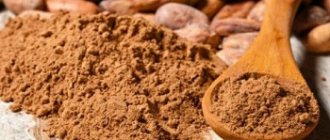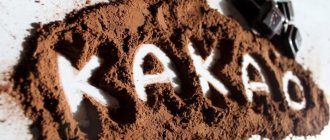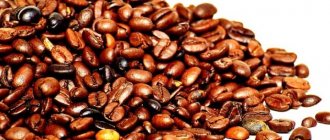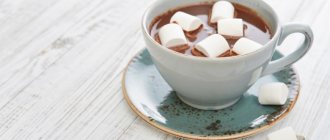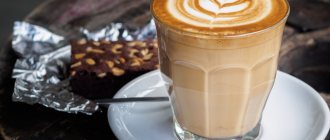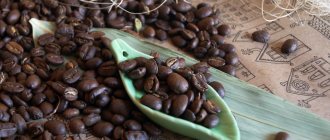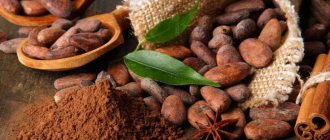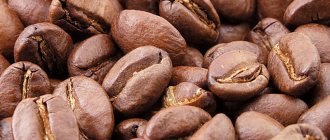How to make cocoa powder
Chocolate trees are a species with evergreen leaves that grow throughout South Africa. The trees are cultivated to produce grains, which are actively used by confectioners to make chocolate. In addition, products obtained from chocolate tree beans are used in medicine.
A drink made from powder with the addition of additional ingredients is also called “cocoa”.
The largest producer of powder is the Republic of Côte d'Ivoire. It is located in western Africa and accounts for about 30% of the world's harvest of valuable raw materials. The chocolate tree is often adjacent to a coconut palm, banana, rubber or avocado trees. In favorable climatic conditions, the tree can bloom all year round and also tends to bear fruit all year round. Fruits on a chocolate tree are formed throughout its life; they reach 30 cm in length and weigh up to 0.5 kg. The fruit is an elongated semi-oval cell containing from 30 to 60 beans. The harvest begins before the rainy season.
Interesting! 1 kg of powder is obtained from 1200 beans or 40 fruits of the chocolate tree.
After harvesting, which is most often done by hand, the fruits are cut and laid out in layers. During 10 days of fermentation, cocoa beans lose their bitterness and acquire qualities that can benefit human health.
After fermentation, the fruits are dried. Several centuries ago they were dried in the open sun; now they use special drying installations in which the process is faster. After drying, the beans are packed in canvas bags and sent to importing countries. In factories for the production of cocoa products from beans, the following are obtained:
- powder;
- oil;
- grated cocoa.
In Europe, the beans are re-roasted, after which they begin to crush them into small pieces using crushing machines. As a result of grinding, a powder is obtained, which is divided into several parts: one of them is put under a hydraulic press, where oil is obtained using heating, the other is subjected to additional processing to obtain a finer powder.
Production stages
In the first stage, the fruits of the theobroma tree are collected. In their shape they resemble beans, which is why they got their name. Only ripe fruits are collected, which will allow us to make a high-quality product. The grains are extracted from the beans, and excess elements are removed. But receiving grains does not mean that you can immediately smell a familiar aroma - in fact, they are tasteless and odorless, and therefore are still subject to further processing.
Heat treatment helps awaken the aroma. It is this process that allows you to feel the full aroma of cocoa, because only after roasting the beans begin to emit a subtle aroma and change their color to a pleasant dark brown hue.
REFERENCE! The product is fried in different ways. The time depends on the type of raw material and the final result that they want to obtain. You also need to consider what the cocoa is used for in the future in order to set the temperature limit.
After frying, the raw materials continue to be processed. A new process is crushing raw materials into small particles. This allows you to isolate the husk, which recedes well after frying. It's called cocoa shell. It can also be found in powder, which is sold on store shelves. It is very easy to calculate - such a product has a low price, so you should not buy the cheapest powder to prepare your favorite drink with foam - due to the additives, the aroma will be poor, and the taste may even be bitter.
Harvesting cocoa is painstaking work for the local population; child labor is still used here
The ground particles are once again subjected to heat treatment. The heated raw materials are passed through special millstones (dryers). This is done to obtain one of the final products - cocoa liquor. But it is also a raw material for another component - oil. The Dutch learned how to extract oil almost two centuries ago, but today the whole process happens faster and with more modern equipment.
Extraction of fats leaves behind a cake, from which cocoa powder is made. This is not the pulp that is formed during roasting. By grinding the extraction residues, a tasty and aromatic cocoa powder is obtained. The particles can be so small that they amount to 16 nanometers - in appearance, such powder looks more like dust. It dissolves perfectly and allows you to cook delicious cocoa even without milk, in water.
Composition nutritional value and calorie content of cocoa
The benefits and harms of cocoa for the human body directly depend on its composition, nutritional value, and ability to influence body systems.
Beans are rich in theobromine, a substance called a caffeine analogue. Chocolate tree beans also contain:
- essential oils;
- tannins;
- minerals (among them calcium, phosphorus, magnesium, sodium);
- a small amount of microelements (among them - zinc, fluorine, iron, molybdenum);
- flavonoids;
- antioxidants;
- vitamins.
Particularly valuable is the content of unsaturated fatty acids, which are necessary for normalizing the activity of all body systems, which are beneficial in regulating most chemical reactions.
The calorie content of the powder is 289 kcal, including: 24 g of protein, 15 g of fat, 10 g of carbohydrates. Dietary fiber is 35 g, water is contained in a minimum amount - 5 g. The highest content of potassium, phosphorus, iron, and zinc is increased.
About the product and its effect on the body
Natural cocoa powder contains ground seeds (beans) of the chocolate tree, and nothing more. If the label lists dyes, flavors and aromatic additives, the product is harmful.
The average nutritional value is 289 kcal per 100 g. The calorie content of some types can reach 400. Therefore, during the period of weight loss, this tasty drink is not the best choice.
Beans contain vitamins B and PP, calcium, potassium, iron, phosphorus and magnesium. The level of antioxidants exceeds even their content in green tea. Therefore, cocoa is rightfully classified as a healthy drink. This product is capable of:
- improve blood circulation;
- stimulate brain activity;
- prevent thrombosis.
In addition, chocolate tree seeds contribute to the production of endorphin in the body - the hormone of happiness and joy. A serving of this aromatic drink will help ensure a good mood and boost of energy throughout the day. And yet, in addition to useful components, cocoa contains caffeine. More about its content, properties and necessary restrictions below.
Useful properties of cocoa
The beneficial properties of cocoa powder are determined by the methods of its preparation. The powder itself is not consumed as food; it is used to make drinks, desserts or cosmetics.
- The maximum concentration of the powder can influence the production of endorphin hormones. These hormones have a positive effect on brain activity, improve brain performance and improve overall well-being. Endorphins are known for improving mood. This property is used by chocolate or cosmetics manufacturers who add artificially created cocoa powder flavors to their products.
- The polyphenols contained in the powder have benefits regarding blood pressure: the drink is recommended for hypertensive patients as a regulator of elevated levels.
- Minerals are beneficial for the formation of musculoskeletal tissue, so cocoa-based drinks or dishes can have a preventive effect on people suffering from musculoskeletal diseases.
- Zinc and iron stabilize the level of hormones in the body, promote rapid healing of wounds, and are building materials for enzyme components.
- The melanin content in the powder makes it beneficial for the body in protecting the upper layers of the skin from ultraviolet rays. This beneficial property helps prevent cancer.
- Due to the increased content of essential oils and tannins, cocoa powder can be a regulator of the body's defenses, provide benefits during the onset of cold symptoms, maintain the level of natural immunity, and also serve as an activator of liver function.
For adult men and women
The benefits or harms of cocoa powder for adult health are considered from the point of view of moderate consumption. Drinks or desserts, when consumed systematically, tend to strengthen capillaries and help improve the appearance of the skin.
We recommend reading: Currant leaves: beneficial properties and contraindications
For women, the benefits of taking it include balancing emotional states and improving hormonal levels. These medicinal properties of cocoa are especially appreciated during periods of pre- and postmenstrual syndrome.
For men's health, the benefits or harms of cocoa drinks lie in the normalization of reproductive function. Minerals and trace elements help increase testosterone production.
For the elderly
The benefits of consuming cocoa for older people include the prevention of cardiovascular diseases, this is due to the beneficial properties of the product:
- strengthen blood vessels;
- reduce the formation of atherosclerotic plaques;
- reduce the risk of developing blood stagnation.
It is recommended to drink the drink with caution for those who experience systematic surges in blood pressure: the tonic properties may have a detrimental effect on their readings.
For children
Cocoa as a drink is used in children's food from the age of 3. It is included in the diet of kindergartens and health-improving institutions.
The only contraindication for consuming cocoa in childhood may be an allergic reaction: in this case, the harm from consumption will be much greater than its benefit.
For athletes
The benefit of the powder for people involved in sports lies in the fact that a glass of the drink after an intense workout helps restore lost nutrients. This occurs due to the content of easily digestible proteins and carbohydrates. Proteins tend to help strengthen the musculoskeletal system; carbohydrates are necessary for the body to replenish the energy balance. In addition, drinking the drink helps restore the water balance lost during exercise.
Chemical composition
Cocoa powder owes its extensive and regularly growing list of beneficial properties to its unique chemical composition. Often, after drinking a cup of thick drink, people notice an increase in vitality and the presence of a therapeutic effect against certain diseases (for example, cough). The described effectiveness is due to the complex effects of the following substances:
- Theobromine: it can be used in medicine due to the ability of the substance to provide a clinically noticeable effect in the treatment of pulmonary diseases. The component included in cocoa powder suppresses the cough reflex well, stimulates the heart muscle and ensures remineralization of tooth enamel.
- Theophylline: a component classified as a bronchodilator that can reduce the contraction of bronchial smooth muscle, which causes a stimulating and vasodilating effect. Theophylline, which is included in the composition, can eliminate pain in the diaphragm and stabilize the respiratory center. Regular use of the component improves blood circulation in the vessels of the heart, brain and kidneys. With prolonged use, the bile ducts expand and pressure decreases.
- Phenylethylamine: A natural neurotransmitter compound that promotes mood elevation, mental stimulation, and mental focus. This effect is due to the ability of the cocoa powder component to increase the concentration of norepinephrine and dopamine in the brain.
- Caffeine: A central nervous system stimulant. Stimulates the heart, dilates the blood vessels of the brain, kidneys (leads to a diuretic effect), skeletal muscles, reduces platelet aggregation. The most well-known property of caffeine is its ability to suppress drowsiness.
- Purine bases: purine derivatives involved in energy transfer in the body and metabolism. An important feature is that purines that enter the body are not converted into uric acid, that is, they do not increase the risk of gout.
- Polyphenols: antioxidants that protect body cells from free radicals that destroy cell membranes and protein structures. Polyphenols reduce the level of fat in food, reduce the risk of duodenal and gastric ulcers, remove radionuclides, prolong skin elasticity, strengthen blood vessels and counteract the development of atherosclerosis.
Is cocoa safe for pregnant and lactating women?
The benefits of cocoa powder with milk for women who are expecting a child can be calculated in several ways:
- improvement of hormonal levels;
- prevention of blood flow problems;
- replenishment of essential minerals.
The harm from taking cocoa for pregnant women may exceed the benefits if the woman has allergic reactions to food products.
For breastfeeding women, the drink can be useful as a means to increase lactation, improve the composition of breast milk, and normalize hormonal levels after a stressful delivery.
The benefits or harms of drinking cocoa drinks for the body can only be discussed if women do not exceed the permissible daily intake.
Does cocoa raise or lower blood pressure?
The benefits of natural cocoa for improving heart function have been proven by various scientific studies.
Its effect on blood pressure can be considered from the point of view of moderate and correct use. A drink with the addition of heavy cream or excessive amounts of table sugar is unlikely to be beneficial for hypertensive or hypotensive patients. In this case, it may cause harm to health.
Natural products with a minimal content of additional components help reduce blood pressure, this is explained by the beneficial properties of the powder to influence the nervous system and normalize blood flow processes.
Does cocoa have caffeine?
Is there caffeine in cocoa powder?
To the question of whether there is caffeine in cocoa, there is only one answer - yes, there is!
But its amount is relatively small, on average it is 0.2%.
And since the attitude towards caffeine is currently ambiguous: some categorically claim that it is harmful, others have the opposite opinion, you will have to decide whether this drink is suitable for you yourself.
However, the very fact of its presence in this drink should make people for whom caffeine poses a potential danger be more careful when using cocoa.
Do not rush to give up your favorite drink just because you discovered the presence of caffeine in it.
It’s better to study in detail the properties of this controversial component, and then be sure to compare its content in different products.
Is it possible to drink cocoa while losing weight?
The drink is often used as a replacement for tonics during diets or detox programs. The peculiarity of this application lies in the use of a natural product and the minimal addition of additional components. The properties of the drink can have a beneficial effect on cleansing the body of toxins and waste due to the content of tannins and flavonoids.
Essential oils help improve metabolic processes, which is a particularly important point in dietary nutrition.
Information! The benefits of cocoa powder for weight loss increase if cocoa is prepared with water.
How to reduce caffeine in cocoa
If you want to reduce the caffeine content to a minimum, but want to use a natural product and not a surrogate, then prepare the drink with milk and take a smaller portion to make it than indicated on the package. This will further reduce the caffeine content in the finished drink. Such weak cocoa can be safely given even to children over 3 years old, in the absence of individual contraindications.
Do you monitor the caffeine content in your products?
If you liked the site, share the link with your friends. Thank you!
The benefits of cocoa with milk
Cocoa with milk is a drink that brings back memories of childhood. Diluted with cream and sweetened with sugar, cocoa leaves no one indifferent. The benefits of cocoa powder with milk are talked about if there is a need to take it as a means to replenish the body’s energy balance.
The drink is useful:
- during periods of rehabilitation after illnesses;
- when the first signs of a cold appear;
- to improve psychological conditions during prolonged stress.
The beneficial properties depend on the addition of additional components: the higher the fat content of the milk component, the greater the amount of sweetener, the higher the calorie content of the drink consumed. Its advantage lies in the fact that the performance of all components can be independently controlled. Hot chocolate lovers have learned to add soy or coconut milk instead of heavy cream, use artificial sweeteners or natural fructose. This significantly reduces calorie content, but maintains taste.
At what age can children be given cocoa?
Cocoa is one of children's favorite drinks, but experts recommend caution when including it in children's menus. Cocoa is a strong allergen. Before introducing it into a child’s diet, doctors recommend waiting until the age of 2 years.
A similar rule applies to chocolate, which, like other sweets, contributes to the development of tooth decay.
When and how to drink cocoa
The drink is recommended to be consumed in the morning. The benefits of taking cocoa in the morning have several characteristic features:
- improves mood;
- activates metabolic processes;
- energizes you for the coming day.
Drinking cocoa at night is not recommended for people who are prone to insomnia or have periodic sleep problems: the benefits of such a drink will be minimal. And its tonic properties can be harmful and cause increased anxiety.
The best way to make cocoa
The best way to make cocoa: recipe with photos
Making cocoa is not that difficult: some people are used to simply brewing it with hot water. But the most delicious cocoa is, of course, made with milk. In addition, there are some other secrets that will make this wonderful drink more flavorful. So, how to make delicious cocoa?
Cocoa is very useful for women, as it normalizes the nervous system and improves mood - which ultimately has a beneficial effect on men!
Ingredients
- 6 tbsp. spoons of cocoa;
- 6 teaspoons sugar;
- 1 liter of milk.
Cocoa recipe
First, boil about a liter of milk. Then, in a separate bowl, mix 4 tablespoons of cocoa powder and 6 teaspoons of sugar. Pour sugar and cocoa with a small amount of hot milk, stirring constantly. You need to bring it to the state of thick sour cream.
Pour the resulting mixture into the rest of the milk and boil again, remembering to stir - there should be no lumps.
Instead of part of the milk, of course, you can use water, but we warn you right away - this will lose a lot of taste. There is no need to change the amount of other ingredients.
Use of cocoa in medicine
The use is due to the healing properties of the valuable fruits of the cocoa tree. The substances contained in its composition have useful bactericidal and anti-inflammatory properties.
Against cough
Take the drink with warm milk, and also prepare products based on cocoa butter. The benefits of taking it include activating expectoration and removing mucus from the body.
We recommend reading: What are the benefits of protein bars, calorie content
For anemia
Treatment of anemia includes a number of comprehensive measures, including the consumption of foods with a high iron content. These include a drink based on cocoa powder, which helps replenish nutrients. Essential oils saturate the body and activate metabolic processes.
From worms
The powder has a softening, tonic, and general strengthening effect. It is used in folk medicine as a remedy for helminthiasis. To do this take:
- 50 g powder;
- 50 g crushed pumpkin seeds;
- 1 tbsp. l. Sahara;
- some water.
These components are kneaded into a stiff dough, divided into 15-20 parts, and rolled into balls. Healthy and tasty treats are taken throughout the day, refusing additional food and water.
Information! This traditional medicine recipe is effective for getting rid of worms for adults.
Contraindications
If you are allergic to cocoa, you should exclude it from your diet. Caution is also required for people with histamine intolerance. Health contraindications of cocoa include diseases characterized by high concentrations of uric acid in the body. In this case, cocoa is a harmful product that can aggravate the condition. A suitable alternative is a carob product. It is a safe cocoa substitute.
Cocoa contains the stimulants caffeine and theobromine. Excessive consumption of foods containing it can cause anxiety, heartburn, insomnia, and cardiac problems. Sensitivity to caffeine and theobromine varies from person to person. Sometimes side effects occur after consuming 1 serving, in other cases a higher dose is required for a negative reaction.
How is cocoa used in cosmetology?
The powder is actively used in the preparation of face or hair masks in home cosmetology. This is due to the presence of useful substances in the composition.
For facial skin
The product is used as a prophylactic for facial skin: it has the ability to have anti-inflammatory and rejuvenating effects.
1 tbsp. l. powder is dissolved in warm boiled water. The product is applied to the face with a cosmetic brush along the massage lines, left for 15 - 20 minutes, then washed off with water.
Cocoa masks benefit the skin as a means of activating regeneration processes.
Lifting mask with cocoa
2 tbsp. l. cocoa is combined with 1 tbsp. l. clay, diluted with raspberry, cherry fruit or lemon juice. The prepared mixture is applied for 20 minutes and then washed off with water at room temperature.
Attention! If a burning sensation occurs, the mask must be washed off immediately!
The benefits of lifting are noticeable after the first procedure: fine wrinkles are smoothed out, complexion improves, skin tone returns to normal. Apply once a week.
Cocoa for hair health and beauty
The powder is used as a means for natural hair tinting and strengthening the hair follicle. It is diluted in warm water, the mixture is applied to the entire length of the hair, left for a while, and washed off.
The benefits of cocoa powder for hair health include treating hair loss and preventing the appearance of split ends.
Apply a mixture of cocoa and water to the scalp. The mixture has:
- warming effect;
- enhancing blood circulation;
- helping to strengthen the hair follicle.
Cocoa bath
Cocoa benefits not only the hair, the condition of the skin of the face, but also the whole body. Chocolate baths were taken by royalty several thousand years ago. Such procedures helped strengthen the protective properties of the epidermis and increased cell regeneration processes. After chocolate baths, the skin becomes smooth and elastic. They also have a slight lifting effect.
Cocoa wrap
Chocolate wrap has become a popular procedure lately; it can be done at home, on your own. To do this, the powder is diluted in warm water until smooth, then applied in a dense layer to problem areas. Wrap in plastic wrap and leave for several hours. The procedure helps to increase blood circulation, improve the condition of blood vessels and capillaries. This leads to smoothing out damaged areas and improving appearance.
Harm of cocoa and contraindications
In addition to its exceptional benefits, the powder can be harmful in the presence of chronic diseases or a tendency to various reactions of the body to foods.
- Harm may occur to people who have allergic reactions to foods.
- For people susceptible to diabetic conditions, the drink may be harmful as a means of increasing blood counts.
- The product is not useful for those who suffer from obesity, severe kidney disease, or gout.
- People who have increased stomach acidity may also experience harm from taking it.
Warning! The benefits of instant cocoa prepared in violation of technological requirements are significantly reduced.
Caffeine content in drinks
Caffeine content in coffee
The largest amount of caffeine is found in coffee, chocolate and tea.
Moreover, its content can fluctuate over a fairly wide range depending on the variety and type of product.
- 1 cup of ground natural coffee contains from 97 to 125 mg of caffeine, depending on the type of coffee and how it is prepared. There is much less of it in a cup of instant coffee – 60-70 mg. And even if you drink decaffeinated coffee, you should know that it is still present there, albeit in much smaller quantities.
- 1 cup of tea contains from 15 to 75 mg of caffeine. Moreover, there is much more of it in green than in black.
- One bar of dark chocolate can contain up to 80 mg of caffeine, while milk chocolate can contain about 20 mg.
- Cola contains a fairly large amount of caffeine. In 1 jar there are 40 mg per 330 grams of product.
- This alkaloid is also present in hot chocolate and cocoa, but in much smaller quantities. On average, with 1 cup of these drinks, 4 mg of caffeine will enter your body.
As a result, we can conclude: cocoa contains caffeine. But this drink contains a very small amount of it compared to coffee, tea or cola.
You can learn more about the properties of cocoa and its benefits for the body from the video.
Cocoa beans contain minimal caffeine
What causes the miraculous effects of caffeine? The riddle is easy to solve - when the alkaloid enters the human body, it irritates the nervous system and a number of indirect reactions occur:
- pulse accelerates;
- brain function is stimulated;
- blood vessels narrow;
- blood pressure increases;
- blood circulation improves;
- the heart works more actively.
An interesting fact is that the effect of the stimulant lasts about half an hour after drinking a cup of coffee or cocoa. There is enough time to wake up the body and make it work. Over time, caffeine has a relaxing effect on constricted blood vessels and has the opposite effect.
Based on the properties of the alkaloid, it is actively used in medical practice. The alkaloid is included in medications for stimulating the heart and respiratory system, painkillers, and drugs to increase mental activity. It is recommended to drink two cups of the drink per day so as not to exceed the dose, the last cup should be two hours before bedtime. Otherwise, insomnia may begin.
The dangers of caffeine have been largely exaggerated. It is harmful only to patients with certain diseases, but the alkaloid content is so small that it is difficult to exceed the dose. Those who suffer from increased excitability, sleep poorly, have heart pathologies, glaucoma, liver cirrhosis, or polycystic disease should not consume caffeine. In other cases, moderate caffeine consumption will not harm the body.
Is there caffeine in cocoa? Those who drink a drink made from aromatic powder with the smell of chocolate are interested. The answer is yes, because 100 g of cocoa contains 230 mg of caffeine or 0.2% - a small amount. If we talk about a cup of a properly brewed drink, the substance content is 10-15 mg. A cup of grain coffee contains ten times more invigorating components.
Many people have mixed feelings about the alkaloid content in the powder. Some people talk about its harm to human health and refuse coffee and other products that may contain an alkaloid. Taking care of blood vessels and the heart, people do not want to expose the circulatory system to a substance that they consider harmful. However, there are some tips on how to neutralize the high content of the alkaloid. First of all, prepare a drink of weak concentration, adding milk to it, but half the amount of powder.
Does coffee have caffeine?
Neutralize the alkaloid:
- lemon slice;
- spices;
- spices;
- natural cream;
- candied fruit.
Others, on the contrary, find nothing wrong with drinking the drink and give it to children. In kindergartens, children are given a warm drink in the morning. In this dilemma, everyone decides whether it is worth consuming cocoa and whether the product will cause harm. If you have pathologies of the cardiovascular system, you should consult your doctor about how much caffeine you can use to eliminate the dangers hidden in cocoa.
REFERENCE! Doctors do not recommend completely abandoning the product - the alkaloid is found not only in coffee, but also in other drinks and foods; its level in cocoa is minimal and cannot lead to a heart attack if consumed in moderation.
The alkaloid is also contained in other products that we often don’t think about consuming:
- one cup of tea contains 15-75 mg of alkaloid (depending on the variety and degree of brewing);
- chocolate: milk - 20 mg, and black - 80 mg per bar;
- A 330 g can of cola contains 40 mg of an alkaloid.
If we talk about traditional coffee, then a cup contains from 95 to 125 mg of the substance, but in a cup of cocoa the amount is much less - 4 mg. Doctors recommend choosing cocoa as your morning drink - it contains less alkaloid and is richer in other nutrients.
The caffeine content in cocoa is minimal. Don't worry about consuming this drink. After all, caffeine is found in all products that contain cocoa - even in cake or chocolate icing. Undoubtedly, there is more alkaloid in coffee, chocolate and other products. To avoid harm to your health, you should eat cocoa products in moderation, and only some people need to completely avoid these products.
You may be interested in: Caffeine Content of Black Tea
TEST: Tea or coffee - which suits you better?
Take this test and find out which drink is best for you.
Start the test We recommend reading: Caffeine content in instant coffee How much caffeine is in a cup of coffee What are the benefits of cocoa beans
Author: Alena Rogozinskaya
The modern “consumer” is overwhelmed by a real barrage of information about the benefits and harms of certain food products. Responsible buyers are concerned about the chemical composition of everything that comes to their table. People have different attitudes towards caffeine. Some consider it an ordinary natural stimulant, while others fear its harmful effects on health. In any case, information about the content of this alkaloid in certain drinks is useful for people who monitor the quality of their diet. Today we will look for traces of this substance in another favorite drink of children and adults - aromatic cocoa. Does cocoa contain caffeine, and if so, in what quantities?
